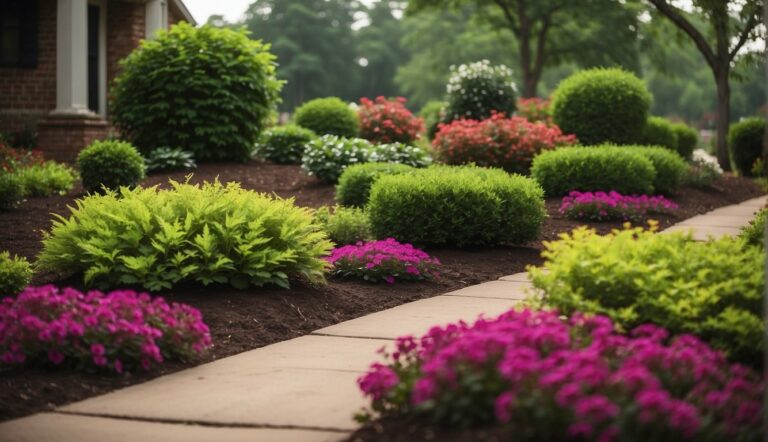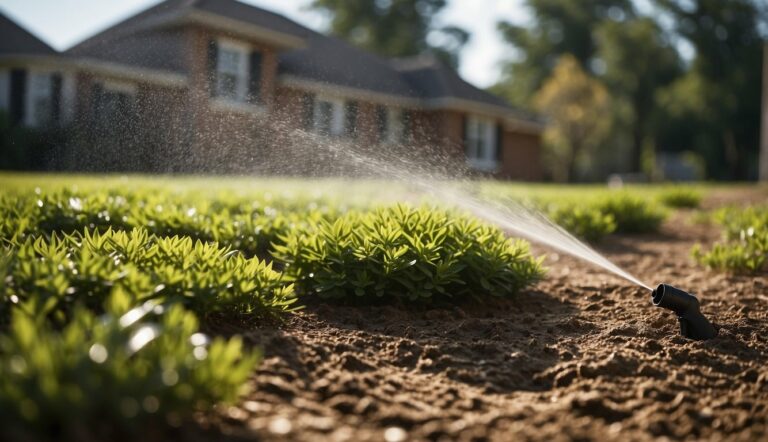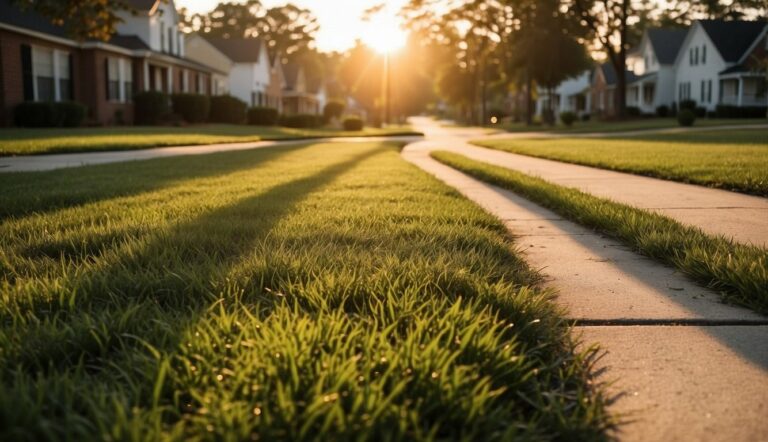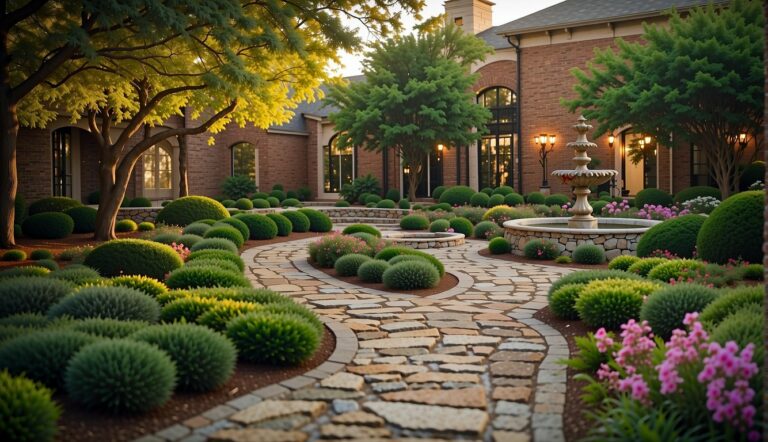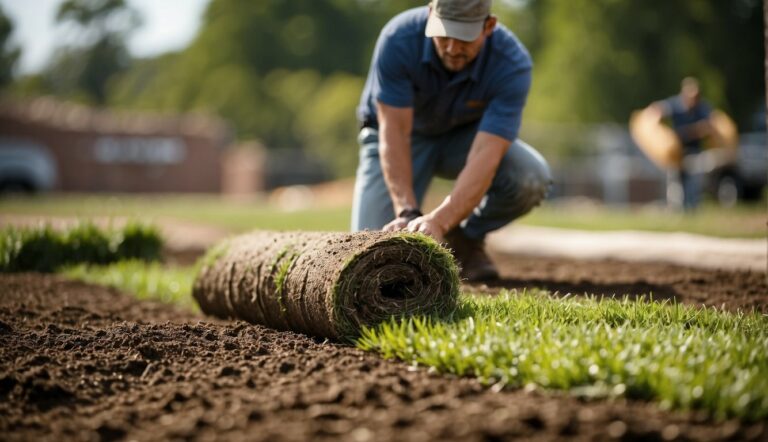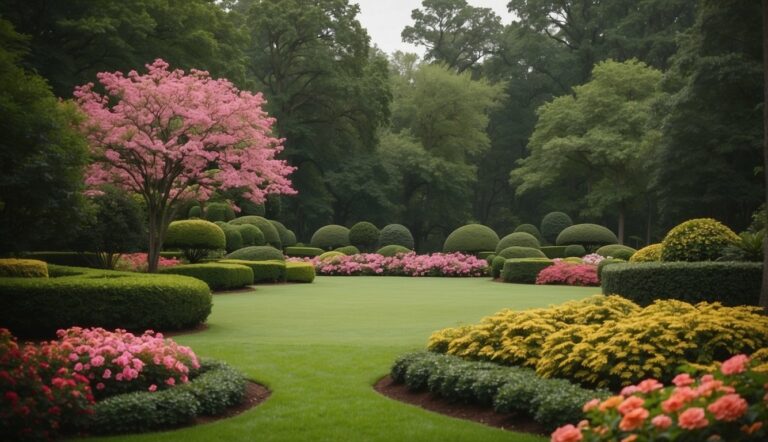As seasoned professionals in lawn care operating right here in Tuscaloosa, we’ve come to understand the critical role that dethatching plays in maintaining the health and vibrancy of local lawns. Over time, a layer of thatch—dead grass, roots, and debris—can build up, suffocating your turf. This barrier inhibits water, nutrients, and air from reaching the soil, ultimately stunting grass growth. Dethatching is the process of removing this layer to ensure your lawn can breathe and absorb essential sustenance.
In Tuscaloosa’s climate, the timing and method of dethatching can significantly influence the success of your lawn care routine. Our experience has shown that the mild winters and warm summers here create a unique environment for grasses, making it important to dethatch during a period when your lawn is most resilient. It’s not just about keeping your yard looking neat; it’s about fostering a healthy ecosystem for your grass to thrive all year round.
Armed with the right tools and techniques, our local landscaping services company is committed to revitalizing Tuscaloosa lawns through expert dethatching. We emphasize a practical, no-nonsense approach that caters specifically to the needs of this region, ensuring that your lawn receives the care it deserves without the confusion of technical jargon or inflated promises. Our goal is simple: to ensure your outdoor space is as lush and robust as it can be.
Dethatching in Tuscaloosa, AL
In our professional experience maintaining lawns across Tuscaloosa, we know that proper dethatching is pivotal for robust grass growth and soil health.
What Is Dethatching?
Dethatching refers to removing the layer of dead turfgrass tissue, known as thatch, which is between the green vegetation and the soil surface. When thatch accumulates beyond half an inch, it can impede the penetration of water and nutrients, affecting the health of the roots.
- Thatch Composition: A combination of living and dead grass shoots, stems, and roots.
- Methods: Manual raking for small areas or mechanical dethatchers for larger lawns.
The Importance of Managing Thatch
A well-managed thatch layer is crucial for a healthy lawn:
| Benefit | Description |
|---|---|
| Enhanced Grass Growth | Reduces competition for resources, allowing new growth to thrive. |
| Improved Nutrient Access | Allows water, air, and nutrients to reach the soil more effectively. |
| Root Health | Roots receive more oxygen, promoting stronger development. |
| Prevention of Pest Infestations | Thick thatch can harbor pests, so dethatching helps in keeping them at bay. |
By dethatching, we clear obstructive debris to ensure your lawn reaches its fullest potential.
Dethatching Techniques
We often recommend dethatching as a way to maintain a healthy lawn by removing accumulated organic matter that can stifle new growth.
Manual Raking
For smaller lawns or minor thatch problems, manual raking is an effective technique. It involves using a specialized dethatching rake with sharp tines to manually remove the layer of thatch.
Steps for Manual Raking:
- Moisten the lawn lightly to make thatch removal easier.
- Use the dethatching rake with a push-pull action.
- Collect and dispose of the thatch after raking.
Power Raking
When the thatch layer exceeds half an inch, power raking might be necessary. This is best performed in the fall or early spring to minimize stress on the lawn.
- Equipment Needed: Power dethatcher or vertical mower.
- Best For: Moderate thatch buildup.
- Considerations:
- Use sparingly as it can be aggressive on the lawn.
- Appropriate for cool-season grasses during active growth periods.
Lawn Aeration
Aeration not only manages thatch but also improves soil compaction, allowing roots to breathe and absorb nutrients effectively.
Aeration Techniques:
- Spike Aeration: This method uses a tool to poke holes into the ground.
- Core Aeration (Preferred): It removes small cores of soil from the lawn, which is most effective for relieving compaction and managing thatch.
By incorporating these dethatching methods, we ensure that our customers in Tuscaloosa enjoy lush, vibrant lawns throughout the year.
Best Practices for Lawn Maintenance
Proper lawn maintenance is essential for a healthy, vibrant lawn. We understand the local climate and soil conditions, ensuring our advice is tailored for your Tuscaloosa lawn.
Seasonal Timing
Spring is the optimal time for dethatching in Tuscaloosa. It’s when your lawn recovers from winter dormancy and begins a period of active growth. This is also the case for fall, as dethatching can prepare your turf for winter and ensure it absorbs nutrients effectively. Follow these specific timings:
- Spring: Dethatch your lawn when the soil is moderately moist and the grass has begun to grow.
- Fall: Schedule dethatching in late summer to early fall before your lawn enters dormancy.
Assessing Thatch Layers
A healthy thatch layer should be no more than 1/2 inch thick. Excessive thatch can suffocate your lawn, blocking essential sunlight and water. To maintain a vibrant lawn color and health, regular lawn dethatching is necessary. Here’s how you can assess your thatch:
- Take a small, wedge-shaped sample of your lawn, about 3 inches deep.
- Measure the thatch layer.
- If it exceeds 1/2 inch, it’s time for dethatching.
Professional Dethatching Services in Tuscaloosa

As experienced professionals in landscaping, we understand the importance of maintaining a healthy lawn. Homeowners in Tuscaloosa can trust our expertise to provide top-notch dethatching services to revitalize their lawns.
Finding Local Pros
For homeowners in Tuscaloosa, AL, locating local pros who offer specialized lawn dethatching services is vital. Quality dethatching requires a skilled touch, and local providers have the expertise and equipment needed.
Scheduling an Appointment
Once you have identified a reliable local pro for your lawn dethatching needs, scheduling an appointment is the next step. Make sure to:
- Contact the Provider Directly:
- Call or fill out a contact form based on the information provided.
- Request a Quote:
- Be clear about the size and condition of your lawn to get an accurate estimate.
- Set a Date:
- Choose a convenient time for both parties, considering the lawn’s growth and season.
By choosing a professional in Tuscaloosa, you ensure your lawn receives the care it needs from someone who understands local grass varieties and soil types.
Lawn Health and Aftercare
As experts in the field of lawn care, we can attest that healthy lawns are the result of diligent maintenance and appropriate aftercare. A lush lawn not only enhances your property’s curb appeal but also supports local ecosystems by offering habitat for beneficial microbes.
Promoting Healthy Lawn Growth
To promote robust, healthy lawn growth in Tuscaloosa, it’s crucial to ensure proper water absorption and nutrient penetration. Our approach focuses on removing thatch, which can suffocate your lawn, using dethatching techniques tailored to your soil and grass type. This creates the ideal environment for roots to receive water and nutrients.
- Thatch Removal: By removing thatch—a layer of dead grass and organic matter—you allow your grass to breathe, which is essential for the proliferation of soil microbes that support a healthy lawn.
- Aeration: Following dethatching, aeration may be necessary to enhance water and nutrient flow, especially in compacted soil conditions.
Ongoing Care Tips
Maintaining a lush lawn necessitates ongoing care, which includes weed control, disease management, and pest deterrence. Here’s how we maintain lawn vitality throughout the year:
- Watering: Implement a regular watering schedule to establish deep root systems, typically early in the morning to reduce evaporation and disease risk.
- Fertilization: Apply fertilizers judiciously; too much can hurt your lawn, while too little can starve it. We recommend a balanced approach, considering the specific needs of your turfgrass.
- Pest and Weed Management: A healthy lawn naturally resists pests and weeds. Our services include monitoring and treating any signs of infestation or unwanted plant growth to prevent them from gaining a foothold.
By adhering to these fundamentals, we ensure your lawn remains healthy, vibrant, and resilient against common challenges.
